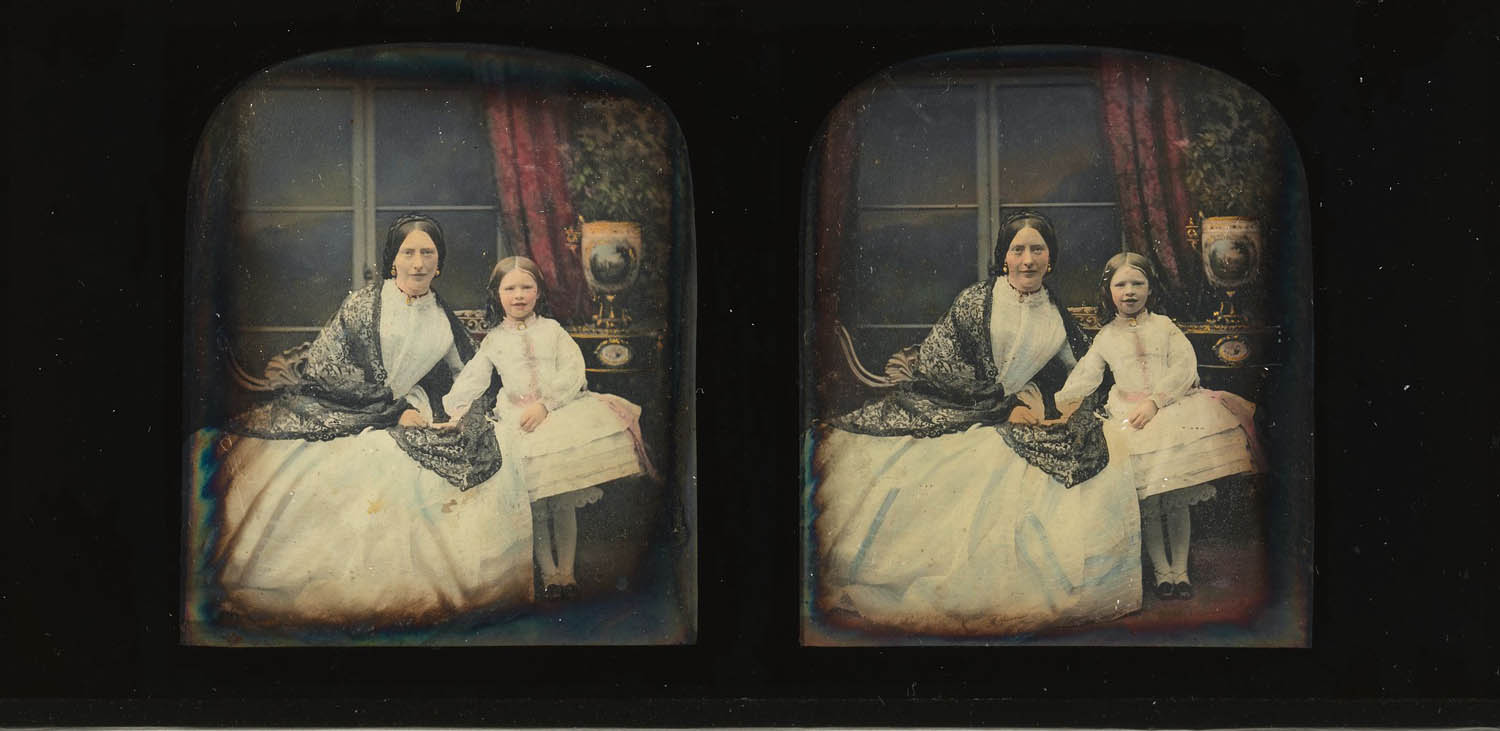Britain’s first professional photographer – the first man to seize on the commercial implications of the daguerreotype – was a Frenchman – Antoine François Jean Claudet (1797-1867).

It was Claudet who solved the problem of making portraits by reducing the exposure time from the 15-30 minutes of motionless posing that made them impractical. By 1842, only three years after Daguerre’s process had been publicly announced, Claudet had invented the red safelight for the dark room, designed a camera that allowed development of the plate to take place inside it, and introduced artificial lighting and painted backdrops to give an artistic background to his portraits.
Claudet was born in Lyon and came to London in 1829, where he imported and sold fine sheets and cylindrical glass including the domed glass shades of Victorian decor.
But in 1839 his attention was caught by the excitement over the daguerreotype and, in the midst of legal wrangling over its use in England, he went to Paris, dealt directly with Daguerre, and bought a licence to practise for £200, a large sum at the time. He became sole agent for the sale of Daguerre’s apparatus and returned triumphant to turn his glass business into Britain’s first camera shop.
At first he sold equipment and daguerreotype views of the Continent, but by July 1840 his catalogue included the first pictures of London, ‘portraits from nature’, ‘figures from the living model’ (nudes), and ‘microscopic objects immensely magnified’.
But Claudet realised that if he could find an easier way of making portraits the public would flock to his studio. So he set to work on solving the problem of the exposure time. In the summer of 1840 he began experimenting with ways to increase the light sensitivity of the process spurred on by competition from a rival. Richard Beard, a speculator in patents.
Beard had brought the rights to an American camera and found a method of shortening exposure which meant that he could open a portrait studio. This he did in March 1841, and people rushed to have their pictures taken. Two months after Beard’s studio opened. Claudet succeeded in making exposures of between 10 seconds and 2 minutes using chlorine and iodine vapour. With a superior system to Beard’s he too opened a portrait studio.
Beard was quick to retaliate. Claudet had not been able to afford to buy the patent for the daguerreotype which Beard had subsequently purchased, and now Beard took out a High Court injunction in an effort to withdraw Claudet’s license to use the apparatus. Beard said in court that he had offered Claudet £200 to buy back his license, but that Claudet had refused, saying that although the patentee had to offer to buy the license, he did not have to accept. Luck was with Claudet and the high court agreed that he could continue with his work.
The disadvantage of Claudet’s daguerreotype portraits was that the image was reversed, but still he persevered with his studio and his innovations. Instead of the usual austere background his clients could now be seen in a woodland glade, a booklined library, or in front of an imposing building, all enhanced by artificial lighting.
The idea was a financial as well as an artistic success and Claudet was now well ahead in the race to be regarded as London’s top photographer. Success followed success as he produced ‘instantaneous’ photographs for the Italian Opera, a huge panorama of London for the Illustrated London News and the first stereo daguerreotypes, which gave a three-dimensional effect. ‘Multiple portraits’ were made with a repeating device and an elongated plate that could be cut up.
Early in 1843 Claudet returned to Paris, discussed the latest developments with Daguerre, and bought a new lens. It was designed by Joseph Petzval and Voigtlander and was 16 times faster than the one he had been using. With this he was able to reduce exposure time even more and also to increase the size of his pictures, producing portraits up to 40 x 30cm in size. By 1845 he was collaborating with a French miniaturist to produce delicate hand-tinted daguerreotypes. In 1853 Queen Victoria appointed him ‘Photographer-in-Ordinary to the Queen’.
But Claudet’s position as Britain’s premier professional photographer was not to last. First the daguerreotype was threatened by Fox Talbot’s calotype process, and then in 1851 Frederick Scott Arthur discovered the wet-collodion process, a comparatively fast method using glass plates which produced fine quality results and set in motion the decline of the daguerreotype.
Fashion switched to the cheaper ‘carte-de-visite’ (a small portrait sometimes used as a visiting card). This mass production of the photographed face forced Claudet out of his daguerrian supremacy but, in order to stay in business he began to produce cartes-de-visite. Like his daguerreotypes, they were of considerable quality because of the artistry Claudet used in all his work.
Antoine Claudet died in 1867 in an omnibus accident. I googled this as it reads as if he died watching tele, an omnibus was a horse drawn carriage. The first person to take daguerreotypes in England, he had made an exceptional contribution to the knowledge that was building up about the science of photography, and set a standard in portraiture that was hard to match.
